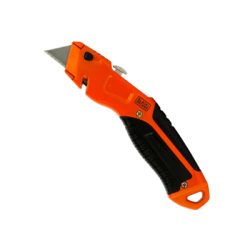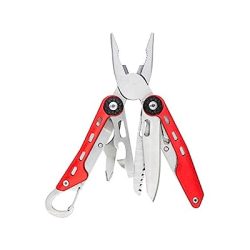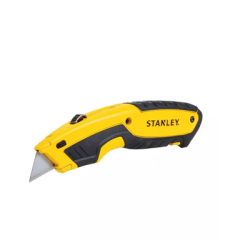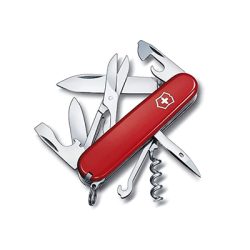Knives Hand Tool
Cordlesspowertools Canada Online stores have a wide range of Products that are available in different types and prices. Popular brands like Bosch, Dewalt, Hitachi, Dongcheng, Cumi, KPT, Ferm, Black Decker, Makita, Jon Bhandari, Ken, Metabo, Bullet, Planet Power, Stanley, Maktec, Ralli Wolf, AOG, Falcon, Hit-Min, IDeal, Eastman, Fein, Electrex, Craftsman, AEG, Zogo, Xtra Power, DCA, Yuri have a vast range of models available with different designs and functionalities. You can easily browse through the products, compare them and choose the one that best fits your needs.
-

BLACK+DECKER Knives Hand Tool (1)
-

HIKER Knives Hand Tool (1)
-

Stanley Knives Hand Tool (1)
-

Victorinox Knives Hand Tool (1)
Knives Hand Tools: Elevate Your Cooking with Premium Kitchen Cutlery
In any kitchen, having the right knives can make all the difference between a pleasurable cooking experience and a frustrating one. Whether you're a professional chef or a home cook, investing in high-quality knives is essential. This guide will explore the best kitchen knives, including handcrafted options, versatile utility knives, and everything in between. From top knife brands to ergonomic hand tools, we'll help you find the perfect knives to elevate your cooking.
Types of Knives
1. Chef Knives
Chef knives are the cornerstone of any kitchen. Known for their versatility and precision, high-quality chef knives are designed to handle a wide range of tasks, from chopping vegetables to slicing meats. When searching for the best kitchen knives, look for features such as a sharp, durable blade, ergonomic handle, and balanced design. Reviews often highlight top knife brands like Wüsthof, Shun, and Zwilling for their exceptional performance and craftsmanship.
2. Utility Knives
Utility knives are perfect for everyday use, providing a versatile solution for tasks that don’t require a large chef knife. These knives offer precision cutting, making them ideal for slicing fruits, trimming meats, and handling general kitchen prep. Additionally, versatile kitchen knives come in various sizes and shapes, ensuring you have the right tool for any job. Whether you're chopping vegetables, cutting through packaging, or performing delicate tasks, a utility knife is a must-have for home cooks. With their durability and ease of use, they are an essential addition to any kitchen toolkit.
3. Handcrafted Knives
Handcrafted knives are highly sought after for their exceptional quality and unique design. Crafted with meticulous attention to detail, these knives offer unparalleled performance, combining both functionality and artistry. For example, renowned brands like Global and Bob Kramer are celebrated for their handcrafted knives, which seamlessly blend traditional techniques with modern innovations. As a result, these knives not only deliver precision and durability but also stand out for their distinct aesthetic appeal. Whether for professional chefs or home cooks, a handcrafted knife elevates any culinary experience, providing both reliability and a touch of craftsmanship.
4. Knife Sets for Chefs
A complete knife set for chefs typically includes a variety of knives to cover all culinary needs. A well-rounded set might include a chef knife, paring knife, utility knife, bread knife, and a carving knife. Premium kitchen cutlery sets often come with additional tools such as honing steels and knife blocks. Investing in a high-quality knife set ensures you have the right tool for every task, enhancing both efficiency and enjoyment in the kitchen.
5. Multi-Purpose Hand Tools
In addition to traditional kitchen knives, multi-purpose hand tools are valuable additions to your kitchen arsenal. These include tools like boning knives, serrated knives, and fillet knives. Each tool serves a specific purpose, making it easier to handle different types of food and cooking techniques.
Features to Consider
1. Blade Quality and Material
The blade quality is crucial for effective and precise cutting. Premium kitchen cutlery often features high-carbon stainless steel, which offers sharpness, durability, and resistance to corrosion. When choosing knives, consider blade material, hardness, and the brand's reputation for quality.
2. Handle Comfort and Ergonomics
An ergonomic handle ensures comfort and control during use. High-quality chef knives and other kitchen tools should have handles that fit comfortably in your hand, reducing strain and allowing for precise control. Materials such as wood, plastic, and composite can all offer different levels of grip and comfort.
3. Durability and Maintenance
Durability is an important factor, especially for professional cooking knives that are used frequently. Look for knives that are well-constructed and designed to withstand heavy use. Additionally, understanding how to properly maintain and sharpen knives is essential for keeping them in top condition. A sharpening knives guide can provide valuable tips for maintaining blade sharpness and performance.
4. Versatility and Functionality
Versatile kitchen knives can handle a wide range of tasks, making them essential for any kitchen. Look for knives that offer flexibility in their use, allowing you to perform multiple cutting techniques with ease.
Top Knife Brands
1. Wüsthof
Wüsthof is known for its high-quality chef knives and comprehensive knife sets. Their knives are crafted with precision and offer exceptional performance for both professional and home cooks.
2. Shun
Shun knives are renowned for their handcrafted quality and beautiful design. These knives feature high-performance steel and are designed for precise cutting and long-lasting sharpness.
3. Zwilling
Zwilling offers a wide range of professional cooking knives that combine tradition with innovation. Their knives are well-regarded for their durability and cutting performance.
4. Global
Global knives are celebrated for their unique design and exceptional sharpness. They are handcrafted to provide a perfect balance and cutting precision.
How to Choose the Right Knife
1. Assess Your Needs
Consider the types of cooking you do most frequently. If you often prepare complex meals, a complete knife set for chefs might be ideal. For more basic needs, a few high-quality knives may suffice.
2. Test the Feel
If possible, handle the knives to ensure they feel comfortable in your hand. The right knife should feel balanced and provide a secure grip.
3. Read Reviews
Check chef knife reviews and feedback from other users to gain insights into the performance and reliability of different brands and models.
Conclusion
Investing in the right knives can significantly enhance your cooking experience. From versatile utility knives to premium handcrafted options, the best kitchen knives offer precision, durability, and comfort. By considering features such as blade quality, handle ergonomics, and overall functionality, you can select the perfect tools for your culinary needs. Explore our range of top knife brands and premium cutlery to find the ideal knives for your kitchen. Whether you're a professional chef or a home cook, the right knives can make all the difference in your cooking journey.
Knives Hand Tools: Elevate Your Cooking with Premium Kitchen Cutlery
In any kitchen, having the right knives can make all the difference between a pleasurable cooking experience and a frustrating one. Whether you're a professional chef or a home cook, investing in high-quality knives is essential. This guide will explore the best kitchen knives, including handcrafted options, versatile utility knives, and everything in between. From top knife brands to ergonomic hand tools, we'll help you find the perfect knives to elevate your cooking.
Types of Knives
1. Chef Knives
Chef knives are the cornerstone of any kitchen. Known for their versatility and precision, high-quality chef knives are designed to handle a wide range of tasks, from chopping vegetables to slicing meats. When searching for the best kitchen knives, look for features such as a sharp, durable blade, ergonomic handle, and balanced design. Reviews often highlight top knife brands like Wüsthof, Shun, and Zwilling for their exceptional performance and craftsmanship.
2. Utility Knives
Utility knives are perfect for everyday use, providing a versatile solution for tasks that don’t require a large chef knife. These knives offer precision cutting, making them ideal for slicing fruits, trimming meats, and handling general kitchen prep. Additionally, versatile kitchen knives come in various sizes and shapes, ensuring you have the right tool for any job. Whether you're chopping vegetables, cutting through packaging, or performing delicate tasks, a utility knife is a must-have for home cooks. With their durability and ease of use, they are an essential addition to any kitchen toolkit.
3. Handcrafted Knives
Handcrafted knives are highly sought after for their exceptional quality and unique design. Crafted with meticulous attention to detail, these knives offer unparalleled performance, combining both functionality and artistry. For example, renowned brands like Global and Bob Kramer are celebrated for their handcrafted knives, which seamlessly blend traditional techniques with modern innovations. As a result, these knives not only deliver precision and durability but also stand out for their distinct aesthetic appeal. Whether for professional chefs or home cooks, a handcrafted knife elevates any culinary experience, providing both reliability and a touch of craftsmanship.
4. Knife Sets for Chefs
A complete knife set for chefs typically includes a variety of knives to cover all culinary needs. A well-rounded set might include a chef knife, paring knife, utility knife, bread knife, and a carving knife. Premium kitchen cutlery sets often come with additional tools such as honing steels and knife blocks. Investing in a high-quality knife set ensures you have the right tool for every task, enhancing both efficiency and enjoyment in the kitchen.
5. Multi-Purpose Hand Tools
In addition to traditional kitchen knives, multi-purpose hand tools are valuable additions to your kitchen arsenal. These include tools like boning knives, serrated knives, and fillet knives. Each tool serves a specific purpose, making it easier to handle different types of food and cooking techniques.
Features to Consider
1. Blade Quality and Material
The blade quality is crucial for effective and precise cutting. Premium kitchen cutlery often features high-carbon stainless steel, which offers sharpness, durability, and resistance to corrosion. When choosing knives, consider blade material, hardness, and the brand's reputation for quality.
2. Handle Comfort and Ergonomics
An ergonomic handle ensures comfort and control during use. High-quality chef knives and other kitchen tools should have handles that fit comfortably in your hand, reducing strain and allowing for precise control. Materials such as wood, plastic, and composite can all offer different levels of grip and comfort.
3. Durability and Maintenance
Durability is an important factor, especially for professional cooking knives that are used frequently. Look for knives that are well-constructed and designed to withstand heavy use. Additionally, understanding how to properly maintain and sharpen knives is essential for keeping them in top condition. A sharpening knives guide can provide valuable tips for maintaining blade sharpness and performance.
4. Versatility and Functionality
Versatile kitchen knives can handle a wide range of tasks, making them essential for any kitchen. Look for knives that offer flexibility in their use, allowing you to perform multiple cutting techniques with ease.
Top Knife Brands
1. Wüsthof
Wüsthof is known for its high-quality chef knives and comprehensive knife sets. Their knives are crafted with precision and offer exceptional performance for both professional and home cooks.
2. Shun
Shun knives are renowned for their handcrafted quality and beautiful design. These knives feature high-performance steel and are designed for precise cutting and long-lasting sharpness.
3. Zwilling
Zwilling offers a wide range of professional cooking knives that combine tradition with innovation. Their knives are well-regarded for their durability and cutting performance.
4. Global
Global knives are celebrated for their unique design and exceptional sharpness. They are handcrafted to provide a perfect balance and cutting precision.
How to Choose the Right Knife
1. Assess Your Needs
Consider the types of cooking you do most frequently. If you often prepare complex meals, a complete knife set for chefs might be ideal. For more basic needs, a few high-quality knives may suffice.
2. Test the Feel
If possible, handle the knives to ensure they feel comfortable in your hand. The right knife should feel balanced and provide a secure grip.
3. Read Reviews
Check chef knife reviews and feedback from other users to gain insights into the performance and reliability of different brands and models.
Conclusion
Investing in the right knives can significantly enhance your cooking experience. From versatile utility knives to premium handcrafted options, the best kitchen knives offer precision, durability, and comfort. By considering features such as blade quality, handle ergonomics, and overall functionality, you can select the perfect tools for your culinary needs. Explore our range of top knife brands and premium cutlery to find the ideal knives for your kitchen. Whether you're a professional chef or a home cook, the right knives can make all the difference in your cooking journey.
